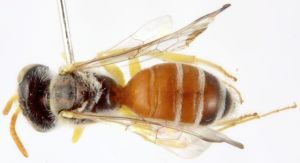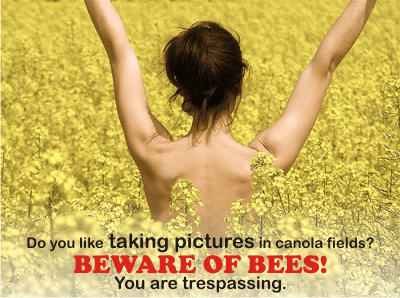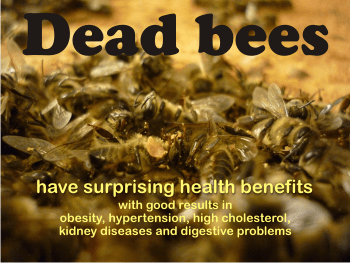Just like people, some bees are picky. They forage only some flowers, and they are called oligolectic bees. There are even bees that like only one plant. They are monolectic bees. However, most of the bees are polylectic, and they will eat without many preferences.
There are over 20,000 species of bees. Some say even 30,000. This is more diversity than in all mammals plus birds put together. Only in North America there are 4,000 species; in California: 1,600 species, in Yolo County: more than 300 species.
Considering their lifestyles, bees can be divided into:
– Solitary – 75% – these are the ones that are oligolectic.
– Social – 10%
– Cuckoos (Cleptoparasites) – 15%
As from the foraging point of view, meaning their preference in pollen collection, bees can be: polylectic, monolectic or oligolectic. We’ll start with the last category:
Oligolectic bees
Humans are not the only beings who have preferences regarding food. Nectar and pollen are different, and so they taste different. Some are sweeter than others. There are picky bees that like only some types of nectar, and others that eat whatever there is. Bees that prefer only a small number of flowering species are known as oligolectic. They would gather pollen only of related plant species or genera of the same plant family.
The advantage to the plant kingdom from this behavior is enormous, since it assures cross-pollination within a single species.

picture © Copyright Hadel Go 2011-2015
In Brazil, for example, only some solitary bees are oligolectic: Calliopsini, Protandrenini, Protomeliturgini, Emphorini, Eucerini, Tapinotaspidini, Paracolletini, Halictini, Rophitinae, Anthidini, Lithurgini, Megachilini.
Oligolectic plants:
There are 19 plant families in Brasil that are visited by oligolectic bees. Here they are, according to Clemens Schlindwein, UFPE – Universidade Federal de Pernambuco, Department of Botany Recife, Brazil, as reported in a 2004 workshop: Onagraceae, Cactaceae, Malvaceae, Pontederiaceae, Asteraceae, Convolvulaceae, Apiaceae, Iridaceae, Loasaceae, Oxalidaceae, Solanaceae, Lythraceae.
From Europe and America, here is a list of some oligolectic plants, as described in the 2009 study “Pollen amino acids and flower specialization in solitary bees” by Christiane Natalie Weiner et al, from Department of Animal Ecology and Tropical Biology, University of Würzburg, Germany and published by Apidologie.org:
Allium cepa, Allium ursinum. Daucus carota, Pastinaca sativa, Hedera helix, Achillea millefolium, Antennaria dioica, Arctium minus, Arctium tomentosum, Bellis perennis, Carduus acanthoides, Centaurea cyanus, Centaurea jacea, Cichorium intybus, Cirsium arvense, Cirsium oleraceum, Cirsium vulgare, Crepis biennis, Echinops sphaerocephalus, Erigeron annuus, Hypochaeris radicata, Leucanthemum ircutianum, Leucanthemum vulgare, Matricaria recutita, Rudbeckia fulgida, Senecio erucifolius, Senecio fuchsii, Senecio jacobaea, Tanacetum vulgare, Taraxacum officinale section, Tragopogon pratensis, Tragopogon pratensis, Tussilago farfara, Echium vulgare, Symphytum officinale, Alliaria petiolata, Berteroa incana, Brassica napus, Erophila verna, Campanula glomerata, Campanula patul, Campanula rapuncoloides, Campanula trachelium, Convolvulus arvensis, Bryonia dioica, Dipsacus fullonum, Knautia arvensis, Lathyrus pratense, Lotus corniculatus, Medicago fallcata, Medicago sativa, Onobrychis viciifolia, Trifolium medium, Trifolium pratense, Vicia sepium, Muscari comosa, Ajuga reptans, Ballota nigra, Galeobdolon luteum, Glechoma hederacea, Lamium album, Lamium maculatum, Lamium purpureum, Prunella vulgaris, Salvia pratensis, Stachys recta, Stachys sylvatica, Lythrum salicaria, Alcea rosea, Malva alcea, Malva moschata, Malva neglecta, Malva sylvestris, Epilobium angustifolium, Epilobium hirsutum, Lysimachia nummularia, Lysimachia punctata, Lysimachia vulgaris, Ranunculus acris, Ranunculus bulbosus, Ranunculus lanuginosus, Ranunculus repens, Reseda lutea, Potentilla anserina, Potentilla reptans, Salix cinerea, Salix dasyclades, Salix triandra, Salix viminales, Veronica chamaedrys.
The conclusion of the study was that “total concentration of free- and protein-bound amino acids was significantly lower in pollen sources used by oligoleges than in other pollen sources. Pollen sources of oligoleges showed a lower concentration of essential amino acids and deviated more strongly from the ideal composition of essential amino acids as determined for honey bees than plants not hosting oligoleges. However, this trend was not confirmed on a cruder phylogenetic plant family level, where pollen chosen by oligolectic bees was similar to other pollen.”
For more details, please see the entire original document here: Pollen_amino_acids_and_flower_specialisation_in_solitary_bees.
How do these plants attract oligolectic bees?
With their scent.
The study made in 2014, “An aromatic volatile attracts oligolectic bee pollinators in an interdependent bee-plant relationship.” by Carvalho AT et al, from Universidade Federal da Paraíba, Cidade Universitária, Brazil, showed that Chemical signals emitted by the plant frequently mediate host-plant localization in specialized animal – plant associations.
Dual-choice bioassays using artificial flowers made of yellow and blue adhesive paper clearly revealed that ρ-methylanisole alone, the dominant volatile of H. martii, attracted significantly more bees than unbaited flowers. This compound represents an olfactory communication channel used by the plant that lures its effective oligolectic pollinators to its flowers. Yellow artificial flowers baited significantly more bees than blue ones. The study reinforces the recent findings that specific compounds in complex floral scent bouquets are crucial for host-plant location in oligolectic bees.
Monolectic bees
There are only a few species of bees known to pollinate one, and only one, species of flower. It is called bee-flower mutualisms. This phenomenon is rare but extremely important from the evolutionary perspective. Neither species will survive without the other, so a loss of one means the loss of both.
Here are some plants foraged by only one species of bee, in Brasil: Alismataceae, Bignoniaceae, Boraginaceae, Calyceraceae, Cucurbitaceae, Turneraceae, Vochysiaceae.
Polylectic bees
Just like in humans, most bees are opportunistic foragers and gather pollen from a vast number of species. These bees are known as polylectic. They are valuable to farmers because they grow more than one crop at a time or more than one crop in sequence. Bees must forage all of them, without being picky.
Both honey bees and bumble bees are polylectic.
Yet, polylectic bees have other types of preferences:
· The bees that collect nectar, like honey bees and stingless bees, will always prefer flowers that have high sugar content (over 50%). For example they will select apple, cherry, and plum over pear, which has a low sugar content nectar. If there is nothing else to eat, they will, of course, take that, too.
· Most wild bees collect only pollen and not nectar, and they will visit the low-sugar-producing flowers of pear and similar plants.
What is FLORAL CONSISTENCY?
When they start a trip to forage a field of viper’s bugloss (to give an example), bees will forage only that type of flower, though there will definitely be other beautiful flowers on that field. Even if the bees are polylectic bees. This is nature’s way of ensuring a good pollination for a floral consistency. Bees will not go from a cucumber to a bean, for example. The cucumber will remain a cucumber forever.
The correct pollination is ensured, and the honey produced is in majority monofloral.
Further reading:
A complete book from where we will find out more about other types of bees, like: mason bees, euglossine bees, carpenter bees, and sweat bees. They are compared for a better understanding: solitary versus social, miners and masons, leafcutters and carpenters.
Their lives are different than the honey bees’ ones. And the illustrations are amazing.
The author of the book, Christopher O’Toole, also wrote Bees of the World in 1992, in conjunction with Tony Raw, an entomologist and bee expert.
The book can be found in hardcover format, containing 240 pages. A Must Have Bee Book.
Other references and picture source:
http://www.honeybeesuite.com/tag/oligolectic/
“viper’s bugloss flowers and bees” featured picture credit Tony Court, published under CC via flickr.com




